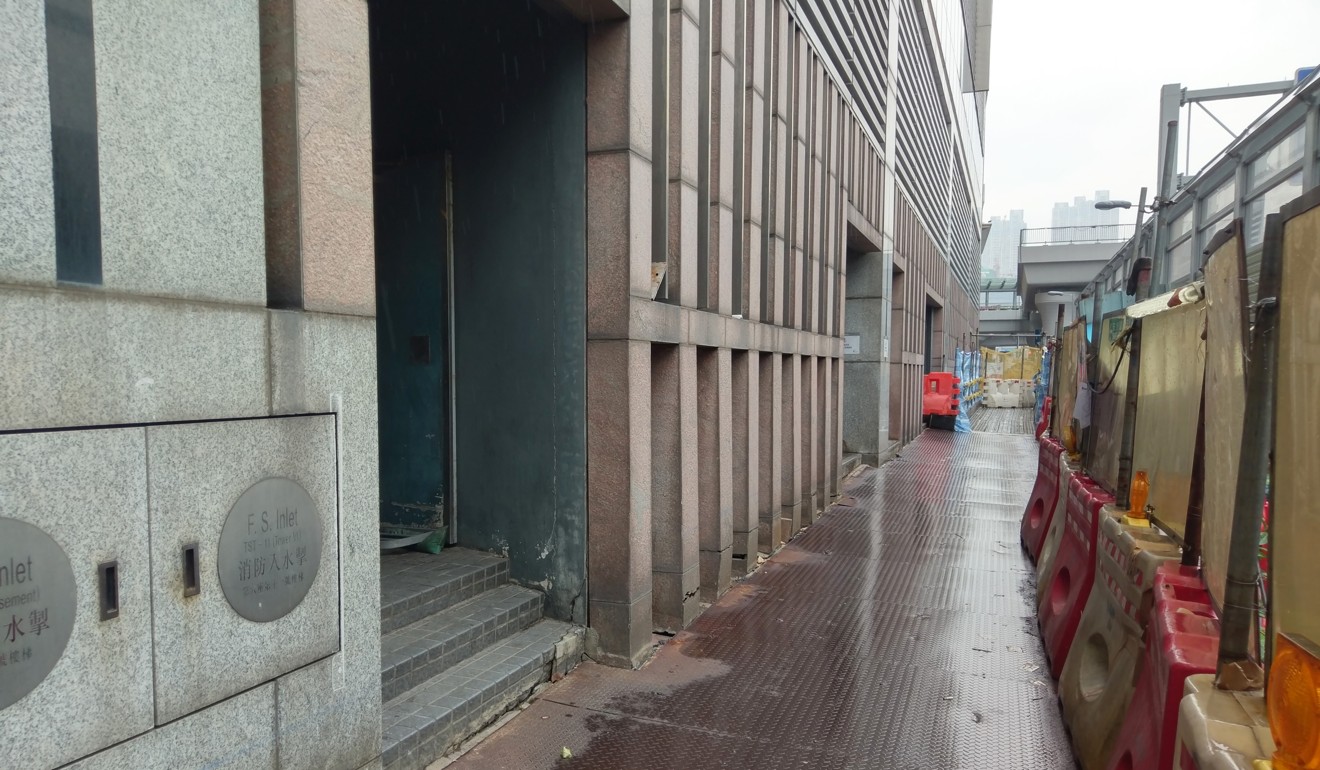
That sinking feeling: another weekend, another tale of woe for Hong Kong’s beleaguered MTR Corporation
Subsidence discovered at luxury shopping and living complex next door to brand new terminus for Guangzhou-Shenzhen-Hong Kong Express Rail Link
Signs of subsidence have been discovered at a residential-commercial complex near the Hong Kong terminus of a new high-speed rail line to the mainland, weeks before it is set to start operating.
The 26km local section of the cross-border line, which cost HK$84.4 billion (US$10.8 billion) to build, will open on September 23.

To the west of its West Kowloon terminus, just across the Lin Cheung Road, is a large-scale residential-commercial compound consisting of Hong Kong’s tallest building, the International Commerce Centre, the Elements shopping centre, and a series of luxury apartment complexes above it, including one called the Waterfront.
FactWire has found a series of signs showing possible subsidence at the compound, including a hole more than 200mm deep on a pavement outside the public transport interchange at the ground floor of the shopping centre.
Uneven surfaces can also be found on Lin Cheung Road, while dozens of marble panels on a wall at the ground floor of the Waterfront complex have also cracked, with the largest fracture measuring 60mm wide.
In the Elements mall, a source who worked there had told FactWire that cracks had appeared in the shop’s floor and walls since 2015, with at least one crack measuring about 1cm wide, and some shops were not able to close their storefront gates because of the cracks.
After inspecting the cracks at the transport interchange, and along Lin Cheung Road, civil engineer Ngai Hok-yansaid the fissures were either caused by ground subsidence, or piling works in nearby construction sites. Ground vibration from high-speed trains at the West Kowloon station in the future could make the situation deteriorate, he warned.
However, the Highways Department said in a written response that settlement, or subsidence readings around Elements “did not exceed predetermined limits that require construction work to be suspended”.
Buy MTR Corp and turn it into statutory body, former railway boss tells government
Cheung Tin-cheung, head of the government’s Buildings Department, admitted after a public event on Sunday that subsidence had happened at the complex during the terminus’ construction. But his department had not received any damage report regarding the structural integrity of the Elements shopping centre, he added.
A spokesman for the rail operator also said the corporation had submitted monitoring data regularly for government authorities to review.
“Monitoring will continue after the construction work is completed to ensure the safety of surrounding buildings and underground tunnels,” the spokesman added.

